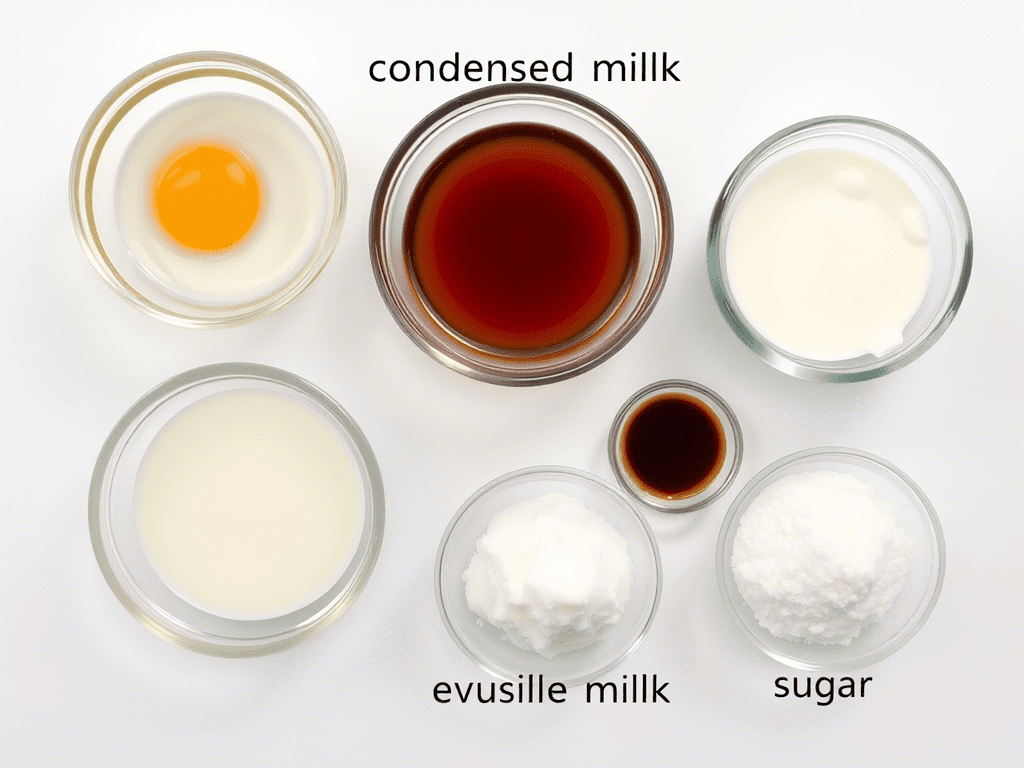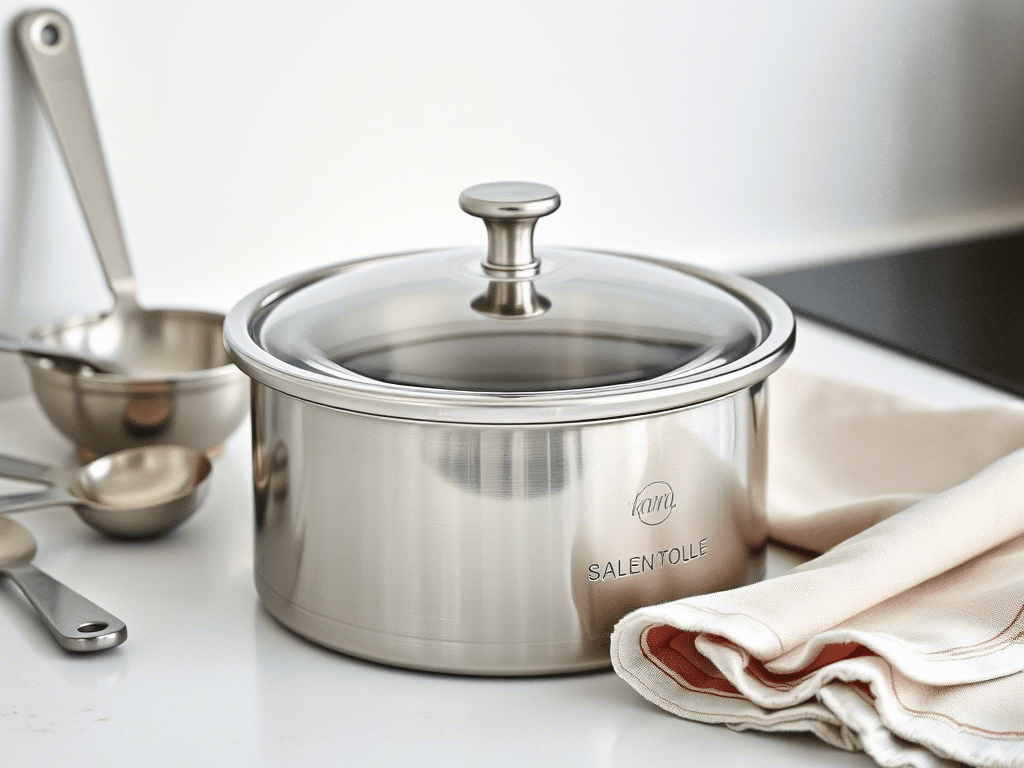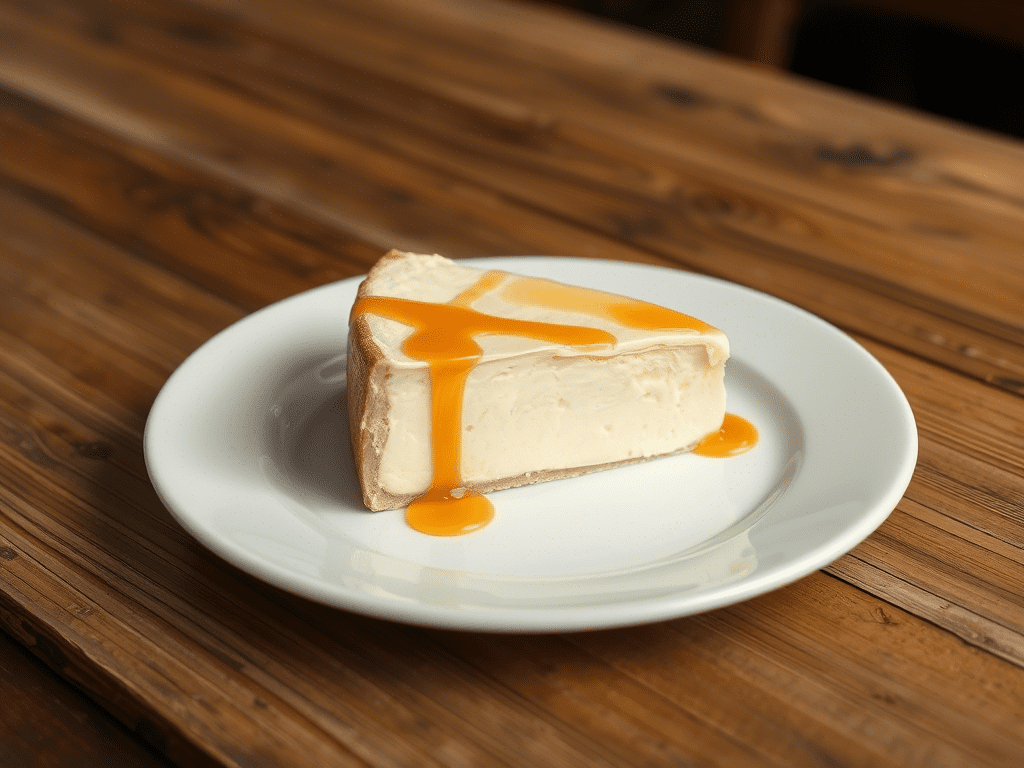Quesillo Love: 5 Irresistible Reasons to Try This Creamy Venezuelan Flan
There’s something magical about old-school desserts, and quesillo sits proudly at the heart of many Venezuelan celebrations. If you’ve never tried this sweet, creamy classic, get ready to fall for a dish that blends simplicity with flavor in the most irresistible way.
Unlike its cousin flan, quesillo offers a richer texture thanks to its use of whole eggs and condensed milk. It’s a staple in Venezuelan households, often prepared by abuelitas and passed down through generations. Whether served at birthdays, Sunday lunches, or just because, this dessert is both nostalgic and timeless.
In this article, we’ll dive into everything from the origins of quesillo, how it compares to traditional flan, and how to make your own with minimal ingredients. We’ll also answer some common questions and help you pick up the best tools and ingredients to recreate this sweet slice of Venezuela in your own kitchen.
Table of Contents
What Is Quesillo?
Quesillo is a beloved Venezuelan dessert that resembles flan but brings its own bold twist. Creamy, golden, and topped with a glossy caramel layer, it’s often referred to as the Venezuelan flan. But make no mistake, quesillo is in a league of its own.
The name “quesillo” means “little cheese” in Spanish, though there’s no actual cheese involved. The name comes from the dessert’s signature texture: soft, silky, and full of tiny holes that resemble cheese curds. That texture comes from using whole eggs, not just yolks, giving it a firmer and bouncier bite than traditional flan.
It’s typically made with just a few ingredients: sweetened condensed milk, evaporated milk, eggs, sugar, and vanilla. Simple, yes, but the result is pure velvet on a spoon.
Whether served cold from the fridge or freshly unmolded and slightly warm, quesillos always impress with their balance of sweetness, creaminess, and that dramatic caramel top that steals the show.
The History Behind This Creamy Dessert
Like many traditional Venezuelan desserts, quesillo has roots that run deep into family kitchens, where recipes are passed down by heart instead of written on paper. While it shares similarities with European flans, especially from Spain and Portugal, quesillo evolved in Venezuela with its own signature flavor and texture.
It became especially popular during the mid-20th century when condensed and evaporated milk became household staples. These shelf-stable ingredients were ideal for tropical climates and brought rich creaminess without needing fresh dairy. Home cooks embraced the simplicity and elegance of the recipe, turning it into a celebration dish that still graces birthday tables and Sunday feasts across the country.
Ask any Venezuelan about grandma’s dessert recipes, and chances are, quesillo will top the list. It’s one of those dishes that turns ordinary ingredients into extraordinary memories.
Quesillo vs Flan: What’s the Real Difference?
At first glance, quesillo and flan might look alike. Both are creamy, caramel-topped desserts often served at celebrations. But if you’re familiar with Venezuelan desserts, you’ll quickly notice the difference in texture, flavor, and ingredients.
Quesillo is made with whole eggs, which gives it a denser, more structured bite compared to flan. The eggs create small air pockets during baking, which give quesillos their signature “cheese-like” look. That’s where the name comes from. The term “quesillo” means “little cheese” in Spanish, not because of the flavor, but because of the porous texture.
Traditional flan, often made in Spain, Mexico, or the Philippines, tends to be silkier and uses only egg yolks. That makes it smoother and a little more delicate in texture. Some flans are flavored with orange zest or cinnamon. Venezuelan flan recipes usually stick to simplicity, but quesillo is where rich, creamy flavor really shines.
When it comes to flavor, quesillo has a deeper, caramel-forward taste. It’s often described as bold, creamy, and slightly eggy in the best way. The vanilla stands out, and the sweetened condensed milk adds a luscious mouthfeel that keeps each bite satisfying.
Quesillo is also more versatile than many people realize. It’s served at weddings, birthdays, and Sunday family dinners. It’s the dessert that shows up when you want to impress but keep it rooted in tradition. That’s the heart of Venezuelan dessert recipes: simple ingredients, maximum comfort.
So if you’ve been wondering about the difference between quesillo vs flan, here’s your answer. Both are creamy and sweet, but quesillo brings texture, character, and Venezuelan soul. It’s the dessert that gives you more than just flavor. It gives you a piece of culture.
Ingredients You’ll Need
Making quesillo at home is surprisingly simple. The ingredient list is short, but each one plays a crucial role in achieving that smooth, creamy consistency and rich caramel flavor.

Here’s what you’ll need:
- Sweetened condensed milk – This is what gives the dessert its signature sweetness and creamy base.
- Evaporated milk – Adds a lighter texture and balances the richness of the condensed milk.
- Whole eggs – Use about 5 to 6. The eggs are what set this custard apart, helping create that soft yet structured texture.
- Granulated sugar – Used to make the caramel topping. It melts into a golden syrup that coats the mold.
- Vanilla extract – Just a splash enhances the aroma and adds warmth to the final flavor.
Optional ingredients some home bakers like to experiment with:
- A pinch of salt to balance the sweetness
- Lime zest for a subtle citrus note
- A drop of rum or coconut extract for added depth
These pantry staples come together to create one of the most beloved Venezuelan desserts. If you’ve ever flipped a custard out of a pan and watched the caramel drip down its sides, you already know the magic of this dish.
Tools and Equipment
You don’t need a professional kitchen to make a perfect quesillo. Just a few basic tools can take you from prep to the final flip without stress.
Here’s what you’ll need:
- Blender or whisk – To mix the custard smoothly. A blender is faster, but a hand whisk works fine if you mix well.
- Quesillera or flan mold – A metal mold with a lid is traditional, but any oven-safe pan with a tight seal or foil will work.
- Heavy-bottom saucepan – Essential for making the caramel. It helps prevent burning and allows even melting.
- Roasting pan or deep baking dish – You’ll use this for the water bath (bain-marie) that surrounds the mold in the oven.
- Oven thermometer – Optional, but helpful to make sure your oven temperature stays consistent.
- Rubber spatula – For scraping every bit of the custard mix into the mold.
Using the right tools can make a difference in how the dessert turns out. A proper mold ensures even cooking, and a water bath keeps the custard from curdling or cracking.
This equipment helps bring traditional Venezuelan dessert recipes to life in your own home — whether you’re baking for family or impressing dinner guests.
How to Make Quesillo Step by Step
This classic dessert may look fancy, but making quesillo at home is incredibly doable. Here’s a simple guide that walks you through every step, from melting the caramel to the final flip.

Step 1: Prepare the Caramel
- In a heavy-bottom saucepan, add ¾ cup of granulated sugar.
- Heat over medium, stirring occasionally, until the sugar melts and turns into a golden caramel.
- Quickly pour the caramel into the bottom of your mold, swirling it to coat the base evenly. Set aside to cool and harden.
Step 2: Blend the Custard
- In a blender (or a large bowl), combine:
- 1 can sweetened condensed milk
- 1 can evaporated milk
- 5 whole eggs
- 1 tablespoon vanilla extract
- Blend for 30 seconds or whisk until fully combined and smooth.
Step 3: Pour and Prep
- Pour the mixture gently over the hardened caramel in your mold.
- Cover the mold tightly with a lid or aluminum foil.
Step 4: Bake in a Water Bath
- Place the mold inside a larger pan filled with hot water (about halfway up the sides).
- Bake at 350°F (175°C) for 60 to 75 minutes.
- The custard is ready when the center jiggles slightly and a knife inserted comes out clean.

Step 5: Cool and Unmold
- Let the dessert cool at room temperature.
- Refrigerate for at least 4 hours (overnight is best).
- To unmold, run a knife around the edges and flip it onto a serving plate. The caramel will flow over the top like a glaze.
This traditional method delivers that silky, golden custard with the perfect caramel finish. Once you nail this process, you’ll want to try all kinds of Venezuelan desserts using the same technique.
Tips for Perfect Texture Every Time
Getting that signature quesillo texture, creamy with a gentle wobble and a smooth finish, is all about precision and a little practice. These pro tips will help you avoid common mistakes and get consistent results every time.
Use room temperature ingredients
Cold eggs and milk can cause the mixture to curdle or bake unevenly. Let everything sit out for about 30 minutes before mixing.
Don’t overmix
Whether using a blender or whisk, stop mixing once the custard is smooth. Too much blending introduces air bubbles that create unwanted cracks or a foamy surface.
Watch the caramel
Sugar burns fast. Keep a close eye when melting it and remove it from heat as soon as it turns golden. Darker caramel can taste bitter.
Bake low and slow
Baking quesillo at a steady, moderate temperature in a water bath ensures the custard cooks evenly and stays silky.
Rest before serving
Chilling for at least 4 hours, ideally overnight, helps the dessert set properly and develop flavor. Never skip this step.
By following these simple guidelines, your Venezuelan dessert will come out just as it should: smooth, rich, and ready to impress. You’ll avoid rubbery textures and ensure a caramel glaze that flows beautifully.
Flavor Variations and Modern Twists
While the classic quesillo is perfect on its own, there’s plenty of room to get creative. Home cooks and pastry chefs alike have added new spins to this traditional dessert without losing its Venezuelan soul.

Coconut Quesillo
Add a half cup of coconut milk in place of some evaporated milk for a tropical vibe. Sprinkle toasted coconut flakes on top for added texture.
Chocolate Quesillo
Blend in two tablespoons of cocoa powder or melted dark chocolate with the custard base. The result is a rich, velvety dessert with a deep chocolate flavor that still keeps the smooth texture intact.
Coffee Infused
Add one to two teaspoons of instant espresso powder or a shot of brewed espresso to the mix. It gives the Venezuelan flan a more adult twist, perfect for pairing with an after-dinner coffee.
Citrus Zest
Lime or orange zest adds brightness and balances the sweetness. Just a teaspoon mixed into the batter is enough to enhance the vanilla flavor.
Quesillo with Spiced Caramel
Infuse the caramel with a cinnamon stick or a pinch of cardamom for a fragrant finish. This works especially well during the holidays.
These versions still honor the spirit of the traditional dish while giving it a fun, fresh spin. If you love experimenting with Venezuelan dessert recipes, quesillo is a great canvas to work with.
Common Mistakes to Avoid
Even with a simple recipe like quesillo, there are a few missteps that can turn your creamy dessert into a kitchen disappointment. Let’s make sure you avoid them.
Using cold ingredients
Cold eggs or milk can cause the custard to bake unevenly. Always let your ingredients sit at room temperature for 20 to 30 minutes before blending.
Overmixing the custard
Blending too long adds air to the mixture. That air creates bubbles and holes that ruin the smooth texture. Mix just until combined.
Burning the caramel
Caramel can go from golden to bitter in seconds. Once it turns amber, remove it from heat immediately. And always swirl it into the mold while it’s still hot.
Skipping the water bath
A bain-marie is non-negotiable. Without it, your dessert might crack or overcook around the edges while staying raw in the middle.
Rushing the chill time
Yes, it smells amazing. Yes, it’s hard to wait. But chilling for at least four hours (preferably overnight) ensures the texture sets and flavors develop.
Avoiding these mistakes will make your Venezuelan dessert silky, flavorful, and presentation-worthy. Quesillo might be easy, but it rewards patience and care.
How to Store and Serve Quesillo
Once your creamy quesillo is ready, it’s time to make the most of it. Storing and serving this traditional Venezuelan dessert properly helps preserve its taste and texture — whether you’re planning a party or just sneaking a late-night bite.

Storing Quesillo
- Refrigerator: After the dessert has cooled completely, cover it with plastic wrap or store it in an airtight container. It will stay fresh and delicious in the fridge for up to five days without losing its flavor or consistency.
- Avoid Freezing: Don’t freeze quesillo. While tempting for leftovers, freezing ruins the smooth custard texture, leaving it watery or grainy after thawing.
Serving Tips
- Serve Chilled: This flan-style dessert tastes best cold. Keep it refrigerated until right before serving.
- Use a Warm Knife: Dip your knife in warm water before slicing to get those perfect, clean pieces every time.
- Dress It Up: Although delicious on its own, you can top quesillo with fresh fruit, coconut flakes, cinnamon, or a drizzle of chocolate sauce to suit any occasion.
Whether you’re bringing it to a potluck or setting it out as a showstopper on your holiday table, quesillo is a comforting and nostalgic option that always impresses. With its silky texture and sweet caramel topping, it stands proudly among the best-loved Venezuelan desserts ever made.
FAQs About Quesillo
What is the difference between flan and quesillo?
Quesillo uses whole eggs, giving it a slightly firmer, spongier texture with tiny air pockets. Flan typically uses only yolks, resulting in a silkier and smoother custard.
Can I make quesillo without a quesillera?
Yes. Any oven-safe metal or glass mold will work, as long as it’s covered tightly with foil. A loaf pan, ramekin, or round cake tin will do the job.
Why does my quesillo have bubbles or cracks?
This usually happens from overmixing or baking at too high a temperature. Stick to a moderate oven (around 350°F) and don’t overblend the custard.
How long should quesillo chill before serving?
Let it chill for at least four hours, but overnight is ideal. This gives it time to set and allows the caramel to seep through the custard.
Can I use flavored extracts?
Absolutely. While vanilla is traditional, almond, coconut, or citrus extracts can offer unique twists without straying too far from the original flavor.
Is it okay to make quesillo ahead of time?
Yes, and it’s encouraged. It actually tastes better the next day once all the flavors settle and the texture firms up nicely.
Can I use plant-based milk?
You can experiment with non-dairy alternatives like coconut or almond milk, but the texture and flavor might vary. Stick with full-fat options for best results.
Final Thoughts
Quesillo is more than just a dessert. It’s a celebration of flavor passed down through generations. If you followed this guide, you now know how to make it authentically, serve it beautifully, and even explore fresh variations.
For More Treat Inspiration
- Filipino Desserts – Explore custard-style sweets from other cultures
- Orange Creamsicle Drink – A creamy citrus treat that pairs well with chilled desserts

Tools to Make It Easier
Here are three hand-picked tools from Amazon that help you make quesillo perfectly every time:
- Okllen 65 oz Stainless Steel Flan Mold with Lid & Handle-A 65-ounce stainless steel mold perfect for water-bath baking. Mirror-polished, sturdy, and trusted by home chefs
- Imusa 1.5 Qt Stainless Steel Flan Mold with Lid-Lightweight yet durable. Features a tight latching system that seals well for custards
- Globe Rocket Flan Mold with Lid (2.75 Qt)-Oversized aluminum mold ideal for steaming or traditional oven water-bath methods
Why These Tools Matter
Each of these molds is designed to give you even heat distribution, a firm seal to avoid water leaks, and the right shape for unmolding smoothly. They help take your homemade quesillo from good to show-stopping.




